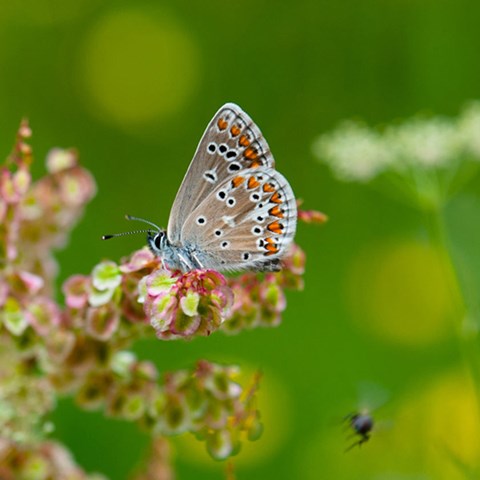Habitat fragmentation prevents species from tracking climate change

Climate change affects biodiversity globally, by forcing species to shift their distribution to track the changes in temperature. An international collaboration between Swedish University of Agricultural Sciences, and scientists from France, the Netherlands and Finland shows that habitat fragmentation caused by human activity affects distribution shifts in butterfly species and, hence, their capacity to cope with climate change. The article was recently published in the journal Ecology Letters.
Ongoing climate change has a profound impact on biodiversity. One of the main consequences of the elevation of temperatures is a tendency for species to gradually shift their distribution towards colder regions, so that they can remain in the climatic conditions they are adapted to
"This process has been observed in several species groups, but usually occurs at a slower pace than the actual velocity of climate change. Understanding the reasons behind, and the consequences of, this growing lag between climate change and species’ response is of major importance, given the current climate and biodiversity crises" says Yoan Fourcade who led this study when he was worked at SLU (now he is connected to Université Paris-Est Créteil).
In this context, a study led by researchers from France, Sweden, the Netherlands and Finland aimed to test whether the fragmentation of natural habitats could hinder species’ distribution shifts caused by climate change. To do so, researchers used a large database from systematic monitoring of butterfly populations, collected by hundreds of volunteers in Finland and the Netherlands over more than twenty years. This enabled them to observe how butterfly assemblages have changed during the last decades.
The results of the study demonstrated that the area of semi-natural habitats (those that are only little impacted by human activity), as well as their spatial distribution in the landscape, both influenced the rate of species turnover. The consequences of these two aspects of habitat fragmentation differ between the 98 species considered, depending on whether their spatial expansion is favoured by a warming climate (“warm-adapted” species) or whether they are at risk of local extinction because of temperature increase (“cold-adapted” species). The colonisation of new sites by warm-adapted and mobile species was aided by the spatial dispersion of semi-natural habitats. In contrast, this raised the extinction risk of less mobile cold-adapted species, more so when habitat area was low. Thus, species that should naturally expand their distribution northward as climate warms are prevented from colonising new suitable habitats when these habitats are clustered and therefore separated by longer distances.
This study provides valuable evidence of a link between the spatial configuration of natural habitats and the ability for species to respond effectively to climate change. It indicates two important perspectives for the management of natural landscapes in a context of rapid climate change.
"First, strengthening habitat networks by providing stepping-stones may allow warm-adapted species to shift their range. Secondly, the persistence of less mobile species threatened by a warming climate calls for increasing the area and spatial cohesion of their habitat" says Erik Öckinger, researcher at SLU.
Scientific article
Fourcade, Y., WallisDeVries, M.F., Kuussaari, M., Van Swaay, C.A.M., Heliölä, J. & Öckinger, E. (2021). Habitat amount and distribution modify community dynamics under climate change. Ecology Letters. https://doi.org/10.1111/ele.13691
Contact
erik.ockinger@slu.se